Analyzing various scenarios of Ukraine’s post-war recovery, scientists of the Institute for Economics and Forecasting of NAS of Ukraine thoroughly study the experience of the recovery in the Republic of Korea after the war. In particular, last year in March the lecture on "Experience of the development of the Republic of Korea and its benefits for Ukraine" was delivered to the employees of this research institution by the Ambassador Extraordinary and Plenipotentiary of the Republic of Korea to Ukraine Mr. Kim Hyong-tae. This year, in April, the Head of the Sector of International Financial Relations of the Public Finance Department Doctor of Economics at this Institute, Professor Olena Borzenko saw with her own eyes the "miracle on the Han River" (that's how they call the South Korean economic miracle of the second half of the 20th century), at the invitation of the Korea Foundation (KF) during her visit to the Republic of Korea together with representatives of the USA, Indonesia, Tanzania, Senegal, Jordan, Yemen and Slovakia. It should be noted that the Korea Foundation was created in times that required changes in foreign policy against the background of democratization and rapid economic growth in this country. This is how the idea arose to create a non-profit public organization related to the Ministry of Foreign Affairs of Korea to take care of public diplomacy, promote better perception and understanding of the Republic of Korea, and establish friendly relations in the international community, in particular through scientific, educational, and cultural exchanges. This idea was implemented in 1991, and since then the Korea Foundation has been looking for and inviting famous people, young people, and future leaders from all over the world to see how the Republic of Korea lives and works.
Each invited participant was personally greeted by the President of the Korea Foundation, Amb. Gheewhan Kim.
Representatives of the Federation of Korean Industries (FKI) visually introduced the guests to the macroeconomic indicators of the Republic of Korea over the last more than 60 years (since 1961), stressing that industrial business, and domestic investors restored the country side by side with state institutions.
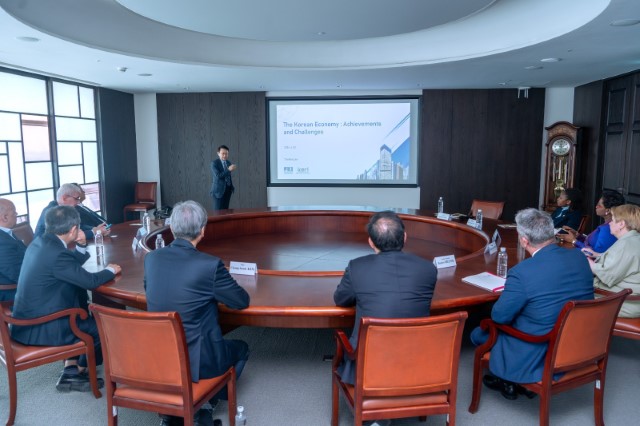 Meeting at the Federation of Korean Industry |
And representatives of the global marketplace (e-commerce platform) - the Korea Trade-Investment Promotion Agency (KOTRA), which has a branch in Kyiv - describe how they are helping Korean businesses grow at the international level today.
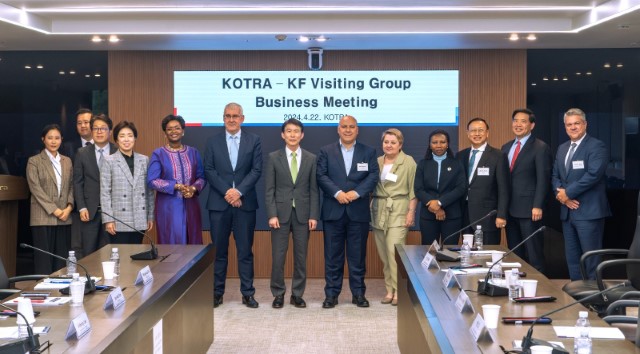 At the Korea Trade and Investment Agency (KOTRA) |
From 1961 on, the country began to actively develop export-oriented industries. Initially, Korea mainly exported goods of light industry, manufactured in small factories, and raw materials. In the 1970s, the Republic of Korea already invested in the heavy chemical industry and laid the foundations for the export of its own products. This country’s shipbuilding, metallurgy, and in particular, the chemical industry, are now competitive on international markets thanks to the policies initiated half a century ago.
Gradually, the Republic of Korea created an export-oriented economic structure that focused on big business during its growth, while taking into account the lack of capital and resources. Industry began to be dominated by conglomerates, and the country's economic structure became heavily dependent on exports and imports, which made it sensitive to external conditions. That is why the country pushed unprofitable enterprises out of the market, and then continued to restructure the industry.
The Republic of Korea with its market economy is negotiating with other countries to sign more free trade agreements, allowing foreigners to invest freely in this country, while encouraging domestic businesses to invest abroad. Offering long-term benefits to foreign investors, the Republic of Korea is establishing itself as a major financial center and logistics base in Northeast Asia.
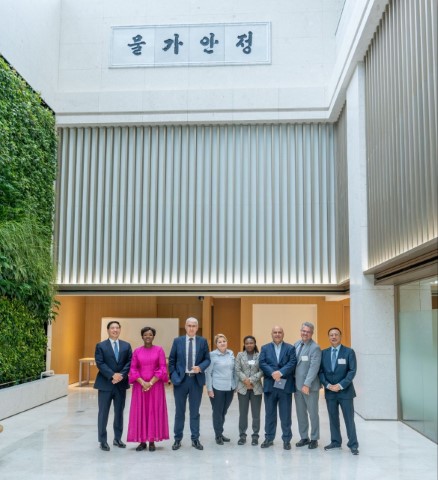 Participants of the Korea Foundation program near the National Bank of Korea (Doctor of Economics, Professor Olena Borzenko is fourth from the left) |
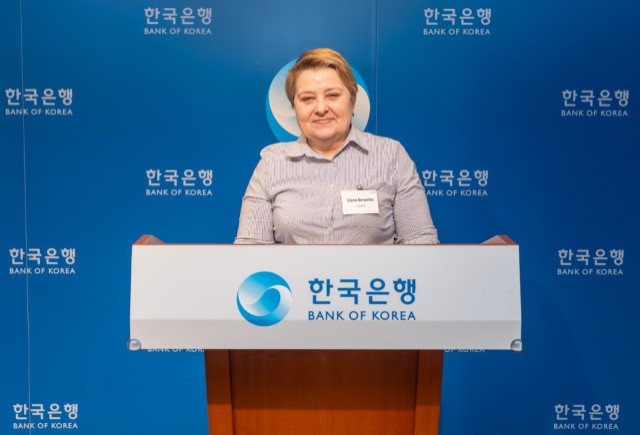 Doctor of Economics, Professor Olena Borzenko at the National Bank of Korea |
At the National Bank of Korea, guests were shown the presentation on "The Financial System of North Korea and Modern Economic Problems" with a comparison of macroeconomic indicators, exchange rate dynamics, living standards and education of North Korea (Democratic People's Republic of Korea) and South Korea (Republic of Korea).
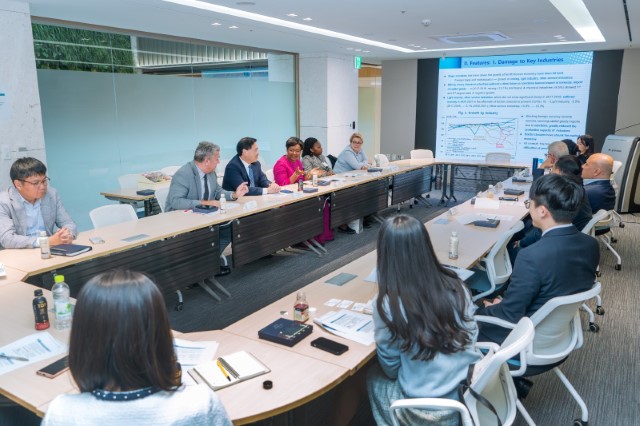 Lecture at the Institute of Economic Research at the National Bank of Korea |
Currently, the Republic of Korea is a leader in the production of semiconductors and displays. Participants of the exchange program of the Korea Foundation had the opportunity to verify this by visiting a number of organizations, including the Global Knowledge Exchange & Development Center in Seoul. It is not just a museum or a large exhibition of all the technological assets of the Republic of Korea from the beginning of the recovery until today. The Center's exhibition convinces that perseverance, work and education can create miracles, make life easier and promote sustainable development.
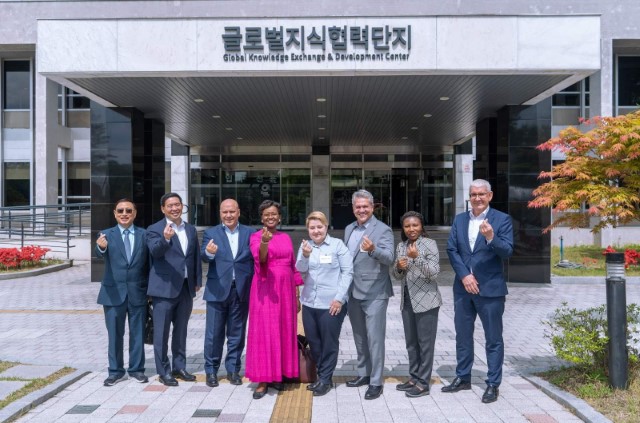 Participants of the program of the Korea Institute at the Global Center for Knowledge Exchange and Development |
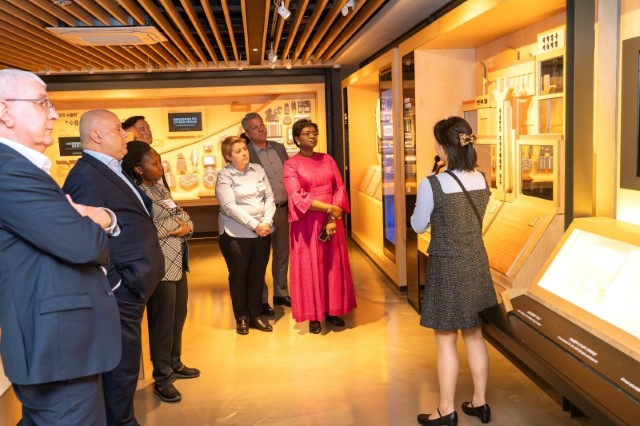 Excursion at the Global Center for Knowledge Exchange and Development |
At the Hyundai Research Institute (HRI), the visitors were shown a car of the future, the fuel for which is hydrogen obtained from water, and at the Space Technology Center of SK Telecom T.um (T.um is 'Technology, U-topia, Museum') - a new world where everything is connected with services based on artificial intelligence. Guests were given the opportunity to virtually experience a spaceship and land on Mars and on the moon. The Center's developments have been introduced in experimental production.
 Lecture by the CEO of the Hyundai Research Institute Dr. Won Ju |
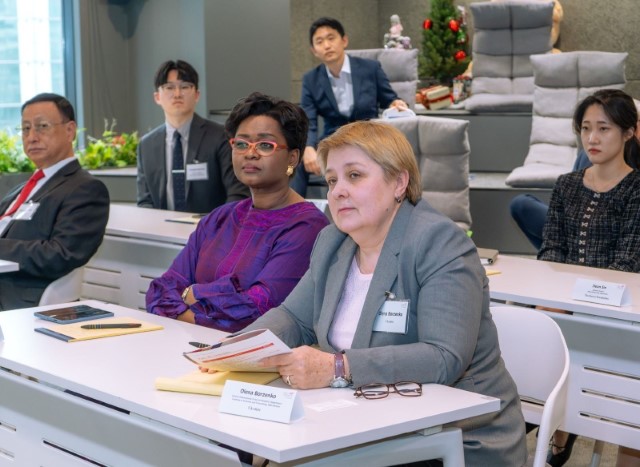 Meeting of the participants of the Korea Foundation program with the staff of the Hyundai Research Institute |
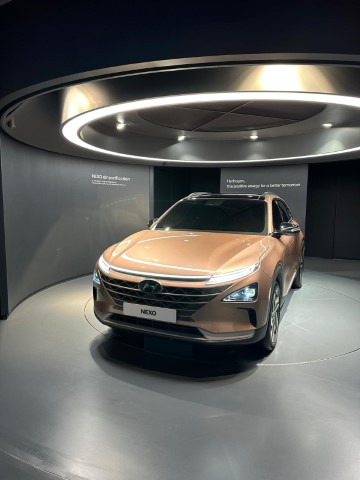 A car of the future that runs on hydrogen obtained from water |
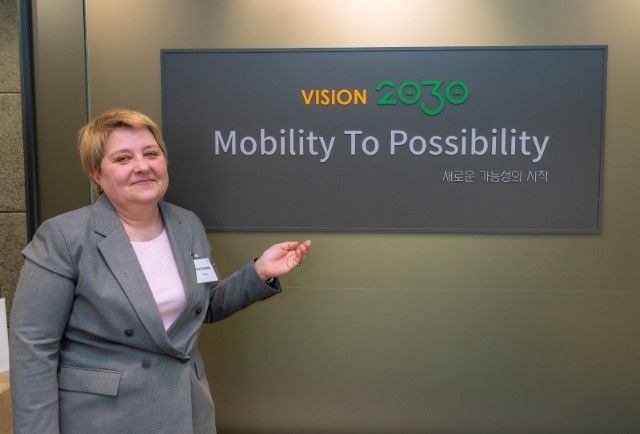 "Mobility to possibility" is the slogan of the Hyundai Research Institute |
 At the Space Technology Center of SK Telecom T.um |
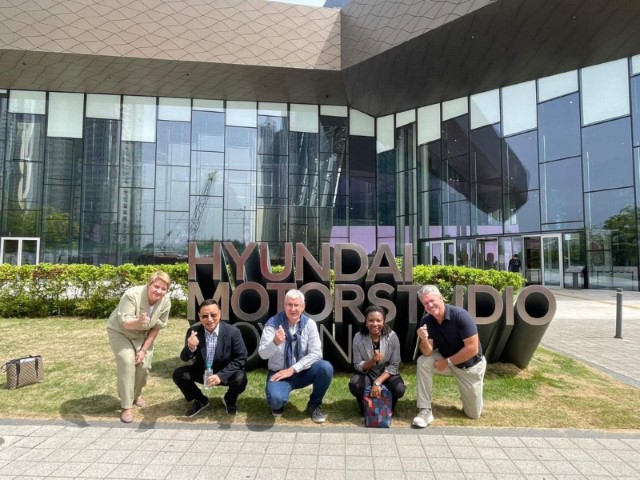 Visiting Hyundai Motor Studio |
Within the Korea Foundation program, Doctor of Economics, Professor Olena Borzenko met with South Korean scientific colleagues - Professor of the Department of Economics at Seoul National University Bonggeun Kim and Researcher from the Korea Institute of International Economic Policy Minhyeon Jeong. They emphasized that it was high school, education, science and innovation that became the driver of the recovery of the Republic of Korea, and the main component of the "Miracle on the Han River" is a hard, conscious and selfless work.
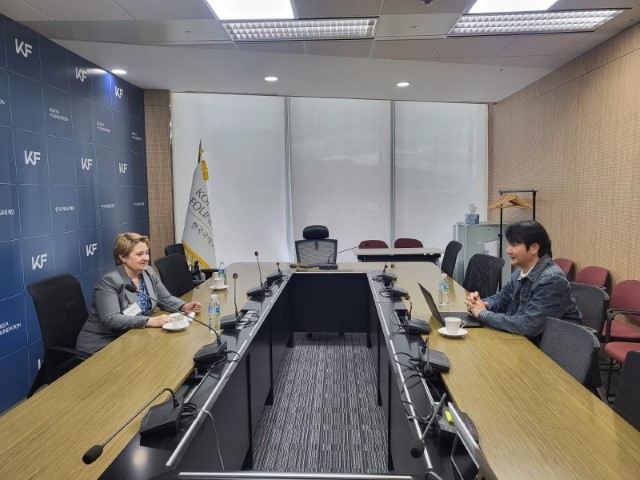 Doctor of Economics, Professor Olena Borzenko meeting scientist Mingyeon Jong |
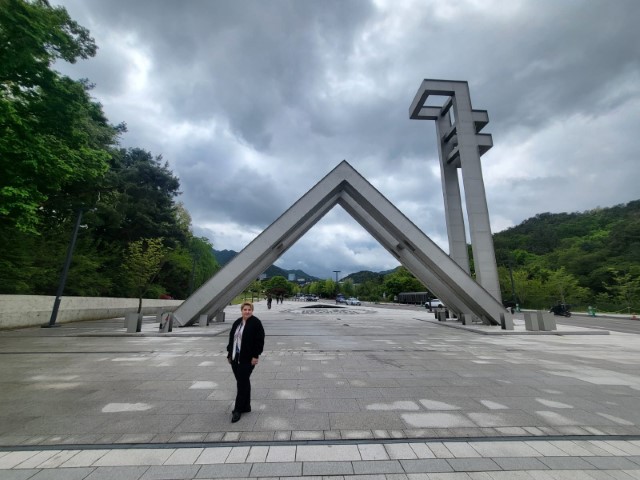 Arch near Seoul National University |
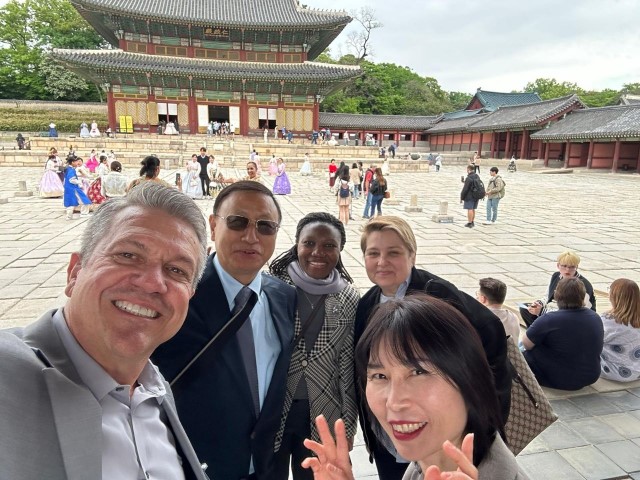 On an excursion at Gyeongbokgung Palace |
At the end of the visit, the guests visited the two-kilometer Korean Demilitarized Zone (DMZ) between the Republic of Korea and the Democratic People's Republic of Korea. It is both an excursion and a military object.
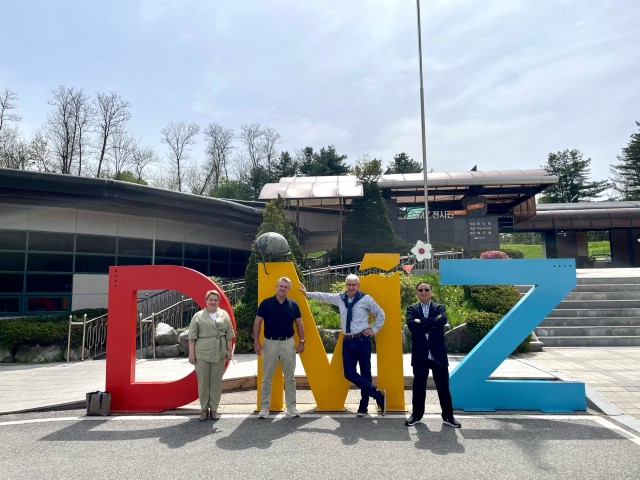 Entrance to the Korean Demilitarized Zone |
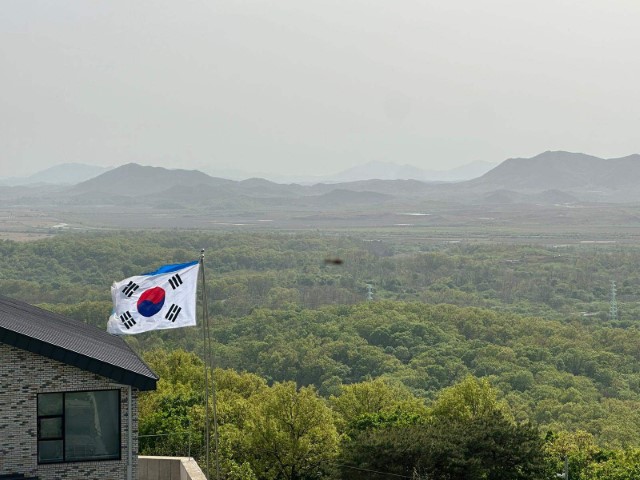 The Korean Demilitarized Zone: A View from South Korea to the North |
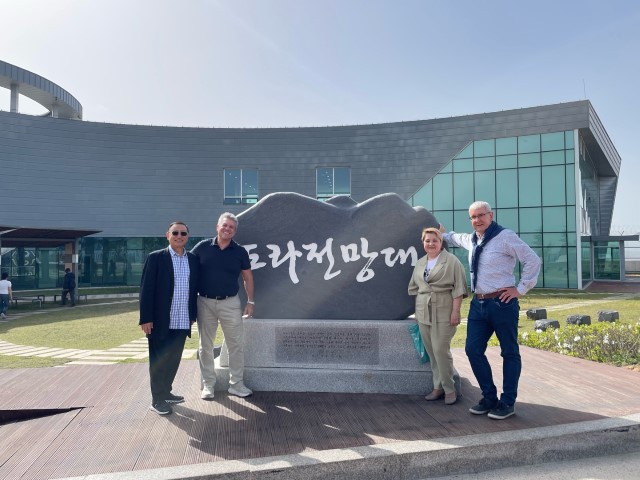 Korean Demilitarized Zone |
During the visit, a preliminary agreement was reached on the signing of memorandums of cooperation between the Institute for Economics and Forecasting of NAS of Ukraine and the Department of Economics of Seoul National University, as well as between the Institute for Economics and Forecasting of NAS of Ukraine and the Korea Institute of International Economic Policy (KIEP). These documents will provide for the implementation of joint projects, holding international conferences, seminars and round tables, and publishing international monographs and collections of scientific works.
According to the Institute for Economics and Forecasting of NAS of Ukraine